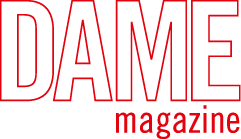

Money Matters
The Summer of Stagflation Is Here
Trump’s tariffs are bringing a dreaded trio of economic forces to bear. Here’s how to survive the squeeze.
This article was made possible because of the generous support of DAME members. We urgently need your help to keep publishing. Will you contribute just $5 a month to support our journalism?
The Trump regime is making everything old new again—and not in a good way. And it’s not just that Americans are being threatened with the return of segregation, police raids on gay clubs, and women dying from illegal abortions. Trump’s economically regressive policies are poised to bring back a dreaded era of deep recession known as stagflation.
Earlier this month, Federal Reserve chairman Jerome Powell warned of the imminent economic damage and fallout looming for the U.S. economy given Trump’s current course of outrageous tariffs and the decimation of the federal workforce. “The risks of higher unemployment and higher inflation appear to have risen,” Powell confirmed. Even as Trump paused some tariffs with China last week, economists warned that empty ports, damaged relationships, and the lingering uncertainty of a volatile trade policy might have already done irreversible damage.
The combination of economic forces currently at work is something that strikes panic in the heart of most economists for good reason. And as Trump glibly infantilizes and demeans consumers worried about increased costs with admonishments to “buy less dolls” for their daughters, all the red warning lights for a summer of stagflation are flashing.
Let’s take a closer look at why stagflation is not your garden-variety recession, the current economic indicators pointing towards doom and gloom, and what the history of prolonged stagflation in the 1970s has to teach us about how everyday Americans can survive the squeeze.
What is stagflation?
Stagflation is named for the confluence of three different economic forces at once. First and foremost, the economy slows or stagnates. Secondly, rising unemployment is coupled with simultaneously rising inflation. The United States hasn’t seen a prolonged period of stagflation since ABBA topped the charts and disco reigned supreme.
Why is this trio of forces so uniquely terrible? Primarily because most of the tools policymakers might use to intervene are ineffective or potentially exacerbate the problem. Normally, economic stimulus packages stem unemployment and revive growth but also increase inflation. However increasing interest rates to combat inflation usually slows growth and increases unemployment.
In stagflation scenarios like the one the U.S. found itself in during the 1970s, there are no good solutions and the economic suffering can be profound and protracted.
One measure that’s traditionally used to quantify stagflation is the aptly named Misery Index. The Misery Index was started in the 1960’s by the Johnson administration as a way to reflect how the economy might feel for average Americans. The U.S. Misery Index is simply the unemployment and the inflation rate added together. The index reached historic highs in 1980 at 21.98 but its historic low was 2.97 in 1953. Currently, the US Misery Index is hovering at 6.59.
What the 1970s stagflation era can teach us
As the U.S. economy emerged from the war in Vietnam, Americans found themselves struggling with a loss of manufacturing jobs and skyrocketing oil prices after OPEC imposed an embargo in 1973. The sudden shock caused further job losses in sectors like transportation due to rising costs and the country faced a cycle of rising inflation and unemployment for most of the decade.
In an effort to interrupt these two forces feeding off each other, the FED dramatically raised interest rates. At one point in 1981, interest rates peaked at a whopping 21 percent before they started to ease. But many economists cite this move as responsible for two recessions in the 1980s that saw the unemployment rate top 10 percent in 1982.
As a result of this episode, economists have emphasized the importance of independent FED authority and clear public-facing communication that seeks to minimize market shocks and uncertainty. And yet if the Trump regime is any indication, Americans will have to learn these lessons anew and the hard way.
Is the American economy already showing signs of stagflation?
The simple answer is yes. And while the country may or may not currently be in stagflation, it’s certain we’ll look back on this time period as the catalyst for our future economic woes. Let’s look closer at each of the forces at work in stagflation compared to current U.S. economic data.
Slowing economic growth
There’s no doubt the economy has slowed since Trump took office. You can see this clearly in the government economic data as gross domestic product (GDP), which was up at the end of last year 2.4 percent, has actually fallen .3 percent. This is in spite of predictions of continued strong economic growth earlier this year.
Rising unemployment
Unemployment was at historic lows in 2023 but has ticked up slightly in recent months, hovering around 4 percent. While that’s not a dramatic increase, there are some signs of stress starting to show in state unemployment data as tariffs take their toll in vulnerable sectors like auto manufacturing and transportation. And of course the illegal DOGE coup and the decimation of the federal workforce is having an outsize effect on unemployment claims in the D.C. area.
Rising inflation
Inflation data indicates the slowest growth since 2021, which is probably what kept the stock market from bottoming out in a depressive spiral this month. But there is a lot of noise hiding in that data. Primarily that consumers were stockpiling to avoid sticker shock from tariffs and the reality of empty ports that haven’t yet hit American retail shelves.
There are some other factors that could contribute to painting a darker picture of America’s economic peril. Consumer confidence has plummeted to historic lows, defaults and delinquencies are rising dramatically, and the U.S. dollar is flailing as we approach another debt-limit crisis in August. Many financial experts warn no matter what happens with tariffs, the summer of stagflation is already here.
How to prepare for stagflation
As terrible as stagflation sounds, there are some things you can do to minimize your personal financial fallout. Financial experts broadly agree the following steps make good fiscal sense when facing down a potential stagflation crisis.
Focus on high-interest debt
Eliminating whatever is taking the biggest chunk out of your financial bandwidth is going to provide some breathing room for the rest of your budget, which could buckle under rising prices. Focus on high-interest debt like credit cards first.
Save, save, save
There are two reasons saving is your superpower during periods of stagflation. One is that when interest rates remain high, you also earn more money on your savings. Look for high-yield savings accounts that provide generous returns to help build your nest egg. Secondly, having an emergency fund might save you from spiraling into debt when unemployment hits.
Don’t try to spend your way out of this mess
It’s tempting to think you can stockpile some stuff and avoid the worst of the tariffs, but Trump is a chaos agent and there’s no strategy. You’ll simply end up spending what you don’t have while the target moves before you can hit it again and again and again. Panic buying en masse will also worsen inflation and place more stress on fragile supply chains.
Diversify and reduce risk
If you have a retirement portfolio and you’re worried about insulating yourself from stock market dips, diversifying into safer stocks like utilities and staying away from tech stocks might reduce volatility. You can also go more conservative with bonds and securities and take any money you think you’ll need in the next three to five years out of the market now.
While the economy isn’t at imminent risk of implosion, many economists are definitely reading stagflation in the tea leaves. You may not be able to change whether this regime is on a collision course with making the U.S. a failed state, but you can protect yourself and the people you love from financial risk in a world where money is definitely power.
Before you go, we hope you’ll consider supporting DAME’s journalism.
Today, just tiny number of corporations and billionaire owners are in control the news we watch and read. That influence shapes our culture and our understanding of the world. But at DAME, we serve as a counterbalance by doing things differently. We’re reader funded, which means our only agenda is to serve our readers. No both sides, no false equivalencies, no billionaire interests. Just our mission to publish the information and reporting that help you navigate the most complex issues we face.
But to keep publishing, stay independent and paywall free for all, we urgently need more support. During our Spring Membership drive, we hope you’ll join the community helping to build a more equitable media landscape with a monthly membership of just $5.00 per month or one-time gift in any amount.




















































































